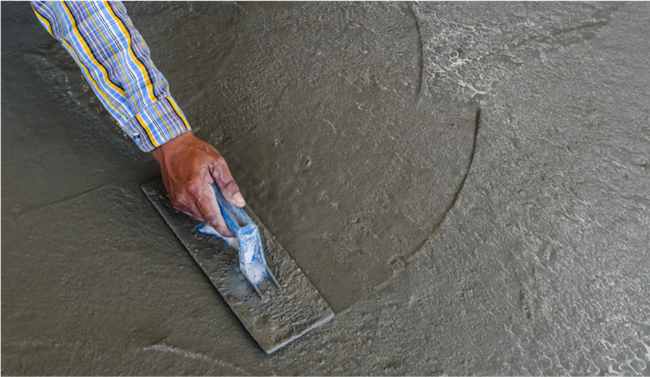
The presence of excess moisture in concrete installations can cause a number of problems — including flooring and adhesive failures, mold and mildew growth, and the release of harmful gasses. Fortunately, there’s a go-to fix: vapor barriers and vapor retarders.
Causes of Moisture in Concrete Installation
Moisture in concrete may result from various causes, such as ground moisture, high humidity, leaking plumbing or an excess of moisture from the concrete mixture itself. While there are various ways for moisture to enter the slab, however, there is only one way for moisture to exit: It must evaporate from the slab’s surface. In many situations, it’s impossible to create constantly dry, evaporation-friendly conditions around a concrete slab. In these cases, remediating treatment is required.
Solutions to Restrict Moisture in Concrete Installation
Generally speaking, exterior concrete slabs will not require vapor protection. For interior concrete installations, a professional contractor will typically apply a vapor barrier or a vapor retarder directly under the concrete slab to ensure a favorable product. To be effective, vapor protectors must be installed according to guidelines provided by the American Society for Testing and Materials (ASTM).
Industry experts define vapor retarders and vapor barriers as follows:
Vapor Retarder: A vapor protection layer with a permeance of .1 or less when tested in accordance with ASTM E 1745 Section 7.
Vapor Barrier: A vapor protection layer with a permeance of .01 or less when tested in accordance with ASTM E 1745 Section 7.
Professional Standards and Practices
The placement of vapor barriers and vapor retarders requires careful consideration, as well as adherence to a number of professional and best practices. Generally speaking, it’s best to hire a knowledgeable professional to install concrete and concrete-associated moisture protectors in and around your home.
For more information about vapor retarders and vapor barriers as they relate to concrete installation, consult the following professional resources:
- American Concrete Institute (ACI): Highlighted material on vapor.
- American Society for Testing and Materials (ASTM): Standard Practice for Installation of Vapor Retarders Used in Contact with Earth or Granular Fill Under Concrete Slabs, document ASTM E 1643.
- American Society for Testing and Materials (ASTM): Standard Specification for Plastic Water Vapor Retarders Used in Contact with Soil or Granular Fill under Concrete Slabs, document ASTM E 1745 Section 7.
- Building Science Corporation: BSI-003 Concrete Floor Problems.
- National Ready Mixed Concrete Association: CIP-29 — Vapor Retarders Under Slabs on Grade.
 Concrete Cleaning: An Easy Makeover For Your Exterior
Concrete Cleaning: An Easy Makeover For Your Exterior  Concrete Flooring – Solid as a Rock
Concrete Flooring – Solid as a Rock  How to Choose a Concrete Contractor
How to Choose a Concrete Contractor  Concrete Mudjacking
Concrete Mudjacking  Explore the Possibilities of Concrete Siding
Explore the Possibilities of Concrete Siding 

Are You Familiar With This Topic? Share Your Experience.